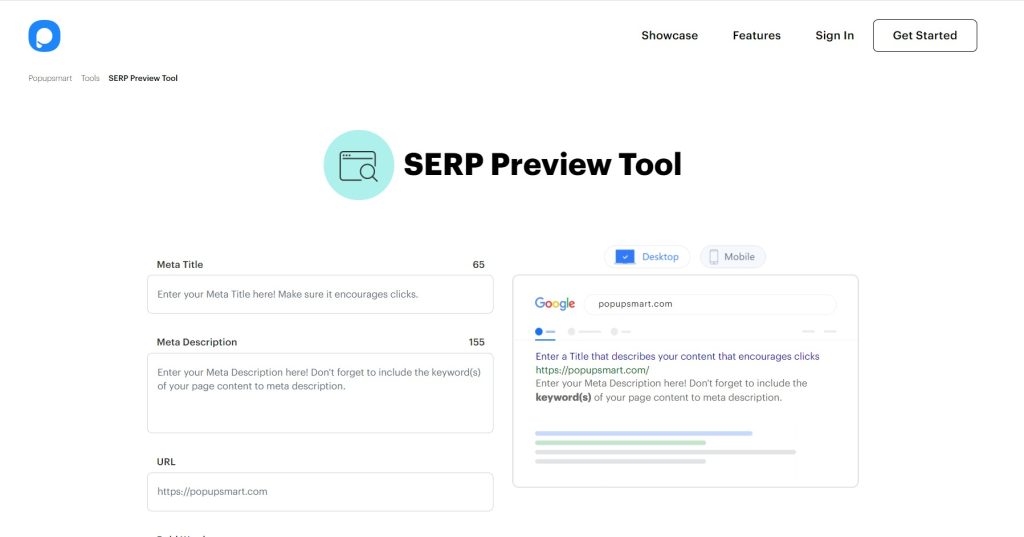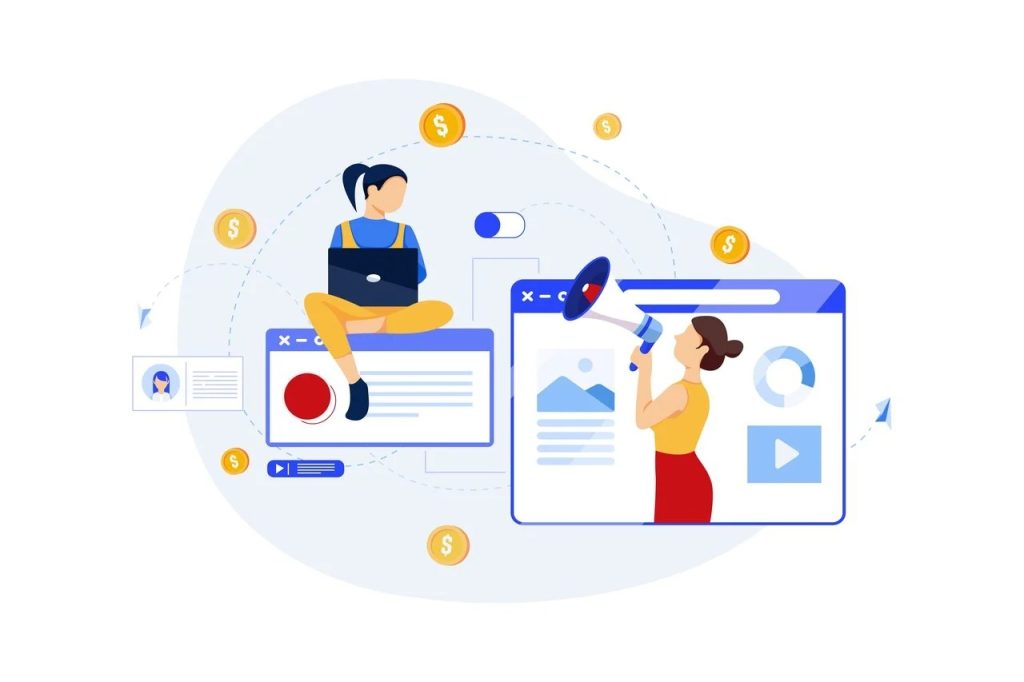In this post, we’re going to cover an essential Shopify SEO checklist that will help your store rank higher in search engine results and drive more organic traffic to your site.
If anything stresses out and puzzles new Shopify store owners, it is to understand how search engines index and rank pages and how you can improve SEO for Shopify.
While all the eCommerce platforms and digital marketing channels available make anyone capable of starting their own business, the level of competition is intimidating.
Shopify powers over 1,000,000 small to large businesses worldwide. It takes more than creating a visually-pleasing eCommerce store to drive organic search traffic and sales. Better search engine optimization allows potential customers to find your store easily, which naturally leads to increased sales.
Can you do SEO on Shopify?
While Shopify comes with several useful SEO features, such as a blog and the ability to redirect, it can also cause SEO issues such as duplicate content, duplicate page titles, and forced URL structure. But you can improve SEO on Shopify with practices like removing duplicate URLs from internal linking architecture.
We will go through a Shopify eCommerce SEO checklist to help you learn how to do SEO on Shopify successfully. This checklist applies to any eCommerce store built with Shopify to increase your organic traffic as quickly as possible.
You can use the table of contents below to jump through the checklist.
contents:
- Shopify SEO Checklist- How to Do Shopify SEO
-
-
-
-
-
-
-
-
-
-
-
- Set up the Essential Tools
- Research SEO Keywords for eCommerce
- Optimize The Content for Your Shopify Store
- Have a Strong Link Building Strategy for eCommerce
- Fix Technical SEO Issues
- Use Content Marketing for Shopify SEO
- Boost Your SEO Efforts with Other Marketing Channels
-
-
-
-
-
-
-
-
-
-
- Shopify SEO Checklist Infographic
Shopify SEO Checklist- How to Do Shopify SEO
1. Set up the Essential Tools
The first one in the Shopify SEO checklist is to set up the essential tools you’ll need to optimize your Shopify site.
Set up Google Analytics
If you haven’t set up Google Analytics for your website yet, we highly recommend you go and install it today. It is a web analytics service that tracks and reports website traffic in detail.
With Google Analytics, you can learn:
- Total number of conversions and conversion rates
- How much revenue you are getting from SEO
- Which pages generate the most value
Set up Google Search Console
Google Search Console is a free service offered by Google to help website owners monitor, maintain, and troubleshoot a site’s visibility on Google search results.
It provides valuable data about your site’s Google Search traffic, performance, and issues. For example:
- Which queries and keywords bring traffic to your site
- The click-through rate of your page in SERP (search engine results page)
- How has your keyword ranking changed over time
Google Search Console also helps you perform some technical SEO tasks such as:
- Submitting sitemaps and individual URLs for Google crawling and index coverage
- Identifying issues on your site and getting alerted about them
- Checking robot.txt file for errors
Submit your sitemap to Google using your Search Console account.
A Shopify sitemap file lists your website’s individual pages, and all Shopify sites automatically generate a sitemap file. Google and other search engines read sitemap files to crawl your site. It is where you provide information about your pages, videos, and other files.
Shopify store owners can access their sitemaps through [www.yourstore.com/sitemap.xml].
Check for any crawling errors on your website using Google Search Console.
Google and other search engines index websites with bots, which crawl the website and its pages. A crawling error occurs when search engine bots try to reach a page on your site but fail. Fix the errors immediately if you get alerted about any issues.
Bonus: You can use Popupsmart’s free Conversion Rate Checker Tool to detect any issues that might be lowering your conversion rates.
2. Research SEO Keywords for eCommerce
Keyword research is a fundamental SEO practice that involves identifying popular terms and phrases that people in search engines search
Understand the Basics of Keyword Research for Shopify SEO
It is one of the most critical elements in this Shopify SEO checklist. When done correctly, keyword research can help you plan your content strategy, make product decisions, and improve SEO for Shopify.
You need to understand three key concepts to learn keyword research basics: search volume, keyword difficulty, and search intent.
Search volume is the average number of times people searched for a specific query on a search engine per month. The higher the search volume, the more popular it is.
You can use keyword search volumes:
- To determine which new products to launch,
- To find the right keyword to target.
For example, if you are selling toothbrushes and seeing that people are searching for a bamboo toothbrush, you should consider selling that product.
If you already sell bamboo toothbrushes, you should optimize for specific keywords that people are searching for. This way, your product can show up in Google search results.
Keyword difficulty is a metric that shows how difficult it is to rank on search engine results with a specific keyword.
Assessing your keywords’ difficulty lets you determine if investing your time and money on specific keywords is worth: optimizing an organic page for that keyword or bid on that keyword in a Google Ads campaign.
If you are running a small Shopify eCommerce store, then it would be difficult for you to rank for high-difficulty keywords.
It is best to identify keywords that you can rank using a keyword research tool. Long-tail keywords that address your business niche are ideal.
Search intent indicates the primary goal of a user that searches for a specific query in a search engine.
Users often search for a certain type of answer or resource when they perform a query. Before you put any effort into a keyword, check for the search intent of that keyword.
For example, searching for “pizza recipe” has a completely different search intent from “takeout pizza.”
Or when a user searches for “how to give vitamins to my dog,” that user wouldn’t be interested in a product page.
The best way to understand the search intent is to simply search that keyword in a search engine and check the results.
Are there blog pages, product pages, or navigational pages? Plan your keyword strategy with thorough research to aim for a better rank smarter.
Here are the four different search intent categories:
- Informational
- Navigational
- Commercial
- Transactional
Where do SEO keywords go in Shopify?
There are four primary places where SEO keywords go in Shopify:
- ALT tags
- Meta descriptions
- Page titles
- A page’s body content
Use Keyword Research Tools for SEO on Shopify
Leveraging keyword tools is also highly effective for a successful SEO for Shopify and a keyword strategy.
In terms of keyword planning, you shouldn’t solely rely on Google Keyword Planner. Most SEOs today use third-party keyword research tools such as Ahrefs and SEMrush. With keyword tools, you can:
- Analyze your competitors’ top pages, and keywords and detect the content gap.
- Find related keywords, search volumes, search suggestions, and keyword difficulty.
- See the authority of a website, its backlinks, broken links, and so on.
Map Your Keywords to Content Types
Each page on your website- blog posts, homepage, product pages, categories- can rank for different keywords which serve different purposes in your sales funnel.
Top-of-the-funnel keywords typically have higher search volumes but less commercial intent.
Middle-of-the-funnel keywords have a lesser volume than upper-funnel keywords, but users who search for these keywords have already taken a step into the sales cycle. Searched terms are usually products, brands, or sellers.
Bottom-of-the-funnel keywords have the lowest search volume but high commercial value. Users search for these queries to shop.
Prevent Keyword Cannibalization
So far in our Shopify SEO guide, we have discussed Shopify SEO tips about keywords and fundamental Shopify SEO tools.
But this one is more technical and just as crucial to understanding; avoid keyword cannibalization.
Keyword cannibalization happens when you have too many similar or identical keywords on several URLs or pages on your website that are competing for the same keyword.
Make sure you target each keyword and related keywords with a single URL.
3. Optimize The Content for Your Shopify Store
On-page optimization is the cornerstone of any Shopify SEO checklist, and it makes search engines understand what your content is about to rank higher.
Optimize Shopify Meta Descriptions and Titles
Title tags and meta tags are still among the most powerful on-page SEO elements. A title tag is what users see in SERPs, which indicates the title of a specific page.
Use only one H1 tag on your pages. H1 tags are often used as the headline of a page, and they usually include keywords.
Tip: Shopify page titles are H1 tags by default. So, avoid creating additional H1 tags anywhere else on a page.
Make sure your titles are under 60 characters, so they show fully on SERP. Google displays the first 50-60 characters of most page titles. This is why you should include your main keyword near the beginning of your page title.
A meta description is the snippet text displayed under the page title in the search engine results. A better meta description can increase your CTR and thus help your rank higher. You should keep your meta descriptions under 155 characters. Google often cuts off longer meta descriptions.
Use Popupsmart’s free SERP preview tool to ensure your title and meta description length is optimal.
You can optimize your page titles and meta descriptions by:
- Including keywords in the title and meta description
- Using power words that drive clicks
- Using numbers, parentheses, brackets
- Including a date in the title
- Making sure your page titles are compelling
On your Shopify website, you can scroll down to “Edit Website SEO” to edit a page’s title and meta description.
Optimize the titles and meta descriptions of the following pages for SEO on Shopify:
- Blog posts
- Products
- Collections
- Homepage
- Pages
Include Keywords in Page URLs
Search engines see a page URL as an indication of what the page is about. To optimize your URLs and improve SEO on Shopify, you can:
- Include keywords in page URLs
- Keep the URLs short
- Avoid including stop words like “and” or “the”
- Optimize URLs of blog posts, pages, products, collections
You can edit your URLs in the “Edit Website SEO” section of your Shopify website.
Note that you shouldn’t change the URL of an existing page already receiving traffic or has links pointing to it. It might hurt the ranking and traffic.
Image optimization is another significant element in SEO for Shopify stores.
Write descriptive alt tags and filenames to your images.
To ensure your images show up in Image results, you should name each file with something descriptive and write descriptive alt tags that clearly explain the image.
Bad filename: img-16354.png Good filename: mens-white-shirt.png
Include Keywords in the Copy
Include your target keyword in the H1 of the page and the body text. Using a target keyword 2 or 3 times is often enough. Make sure the sentences sound natural. If not, you must have overdone it.
Use Synonyms and LSI Keywords
Aside from the exact target keyword, you can use synonyms and LSI(Latent Semantic Indexing) keywords as well.
LSI keywords are conceptually related terms that Google uses to deeply understand the topic of a web page.
You can use LSIGraph to find LSI keywords.
Optimize Your Pages to Get Higher Engagement
Many SEOs believe that Google has started using engagement metrics to determine the level of relevance of a page shown in the search results. To optimize your pages for higher engagement in eCommerce, you can:
- Write detailed descriptions on your product pages.
- Give links to relevant products.
- Always use high-quality product images and videos.
- Highlight reviews and rankings for social proof.
If you also aim for Shopify blog SEO, you can:
- Keep your paragraphs and sentences short.
- Opt for a simple language.
- Use headings and subheadings properly according to a headline hierarchy.
- Include media such as images, videos, and gifs.
Map Out a Strong Internal Linking Strategy
When you use anchor text to add a link from “Page A” to “Page B” on your site, it is called an internal link.
Internal links are helpful in SEO for Shopify Stores and any website because they can:
- Pass some of the SEO value from one page to the other.
- Make it easy for users to find relevant content.
- Help Google understand the content of a page.
In your Shopify eCommerce store, you can either add links manually or add a “related products” section to product your pages.
4. Have a Strong Link Building Strategy for eCommerce
So far, in the Shopify SEO checklist, we have covered Shopify SEO tools, keyword research, and page optimization. Link building is one that is more technical but just as powerful as the other Shopify SEO methods.
Search engines heavily rely on the authority of the pages and websites to determine which page ranks higher.
In SEO, website and page authority is primarily based on the links from other sites to yours. Here are some of the best practices to boost your site’s authority with links:
- Find unlinked mentions. Reach out and ask them to include a link and mention it to your website
- Links from high-authority websites are always more effective.
- Having links from several sites is better than having links from a single site.
- Guest-post on relevant sites and give a link to your website.
- Get your products reviewed and ask them to include links to your products.
5. Fix Technical SEO Issues
Technical issues negatively impact the rankings in search results. This is why you should make sure you double-check this one in your Shopify SEO checklist.
Detect and Fix Crawl Errors
Crawl errors prevent Google from viewing your website correctly and therefore lower your ranking in search results.
You can use Google Search Console to detect any crawl errors. They are under the Coverage report.
Use a Responsive Theme
Recently, Google has deployed the mobile-first index, which means they will use your website’s mobile version to index it.
Plus, an increasing number of web traffic comes from mobile devices. So, in order to get your Shopify store on Google’s first page results, you need to have a mobile-friendly website.
Non-responsive websites equal lower usability and negative user experience. It impacts your eCommerce store’s ranking negatively, especially for local searches.
You can use Google’s Mobile-Friendly Test Tool to check your store and improve SEO for Shopify.
Fix Broken Links
Broken links are not only bad for the user experience, but they also send negative signals to Google and hurt your Shopify SEO.
A website with lots of broken links seems like it is not up-to-date, making it unlikely to provide valuable information for the searchers.
You can find the broken links on your Shopify site using tools like Ahrefs, and Screamingfrog. Once you detect the broken links on your website, you should fix them by updating the link or removing it.
Optimize Your Page Speed for SEO on Shopify
Search engines put the user experience above all. A slow website disturbs the user experience and increases the bounce rate, causing visitors to leave your website at light speed.
There are many tools you can use to measure your Shopify site’s speed, including Google PageSpeed Insights and GTmetrix.
Sidenote: You should optimize the images on your website to improve the page loading speed. Check out our comparison of the best image optimization tools to find one for your site.
6. Use Content Marketing for Shopify SEO
Now that you have everything else checked on your Shopify SEO checklist let’s go through your website’s content.
Content drives clicks, increases brand recognition, and allows potential customers to find you. Be it descriptive product descriptions or blog posts, do your keyword research well and aim for niche keywords in your business.
Deciding on what to write can be frustrating, but trust me, content marketing is highly effective in boosting your rankings on search engines.
Make a list of all the questions your customers ask, check out your competitors’ content, and most importantly, write content that will provide value to users.
It is also an easy way to collect more backlinks to your site.
7. Boost Your SEO Efforts with Other Marketing Channels
So now you know the fundamentals in your Shopify SEO checklist. But it is also crucial to support your SEO efforts with other marketing channels such as email marketing and social media.
If you enjoyed this post, I’d be very grateful if you’d help it spread by emailing it to a friend or sharing it on Twitter or Facebook. Thank you!
If you enjoyed this, you might also enjoy these posts






















